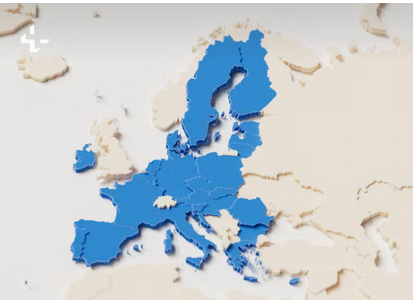
The eurozone’s labour market remains stubbornly strong — for Europe’s crisis, it’s closer to out with the old and in with the new for unemployment rates. Even this apparent resilience is being reassessed as analysts cite small but significant shifts suggesting a turning point.
Low Unemployment … But Stagnation for Everyone
But Eurostat’s most recent data suggests a different, steadier story. The eurozone’s rate of unemployment was 6.2% in January 2025, unchanged from the previous month, while that for the EU overall was 5.8%. This still low, the fourth month in a row, contrasts starkly (not to mention pertinent) to stagnant GDP for the region in the last three months of 2024. The difference between these two barometers raised worrying doubt about the underlying health of the eurozone economy. In seasonally-adjusted terms, the number of unemployed in the EU decreased by 8,000 people to 12,824 million in January. In the eurozone, 42,000 more people entered the jobs market and pushed the total number of unemployed to 10.765 million. Such persistence has flouted early economic forecasts, which have been retooled in light of reality
Youth Demographics and Gender Consistent
Youth unemployment, an always volatile metric, has also been remarkably firm. It was still stubbornly stuck at 14.6% for those under 25 in October in the EU, and down a fraction to 14.1% in the eurozone. The healthy labour force is therefore not simply the result of older cohorts aging; it is evidence of normal stability of employed job resources more broadly.
So has the gender gap in unemployment. Women are still slightly more out of work than men. Unemployment among men in the EU was 5.6% while 6% among women. The euro area followed closely with rates of 6 percent and 6.4 percent, respectively. We argue that this gap continues to exist because the issues behind women thrash the workplace.
International Scene: Spain is Weird in the Best Possible Way
What you see at the cross-country level is a mixed bag of trends. That may be significant in Spain, a country historically hobbled by high unemployment. The January rate fell to 10.4%, from 10.6% in December 2024. At the same time, the Ministry of Labor and Social Economy of Spain said that unemployment decreased more than it has in the same month for the last 17 years in February, reinforcing this positive trend. The jump is far higher than analysts anticipated, and its contract’s surprising nature reflects the shifting character of Spain’s labour market.
The Czech Republic and Poland, in the meantime, still have the lowest EU-wide unemployment stats, both at 2.6% in January. So far, their sound economic fundamentals and flexible labour markets seem to shield them from the broader eurozone slowdown.
So, What Does It All Mean? Cuts in manufacturing jobs and vagaries of trade
And although the present tide appears stable, analysts are increasingly worried about the potential for headwinds on the horizon. Slackness in the eurozone economy, along with increasing uncertainties is expected to pull down on employment this month and next. This flipside is more troubling: Manufacturing jobs are being sliced at the quickest pace in four and a half years, per a February Purchasing Managers Index (PMI) from S&P Global. The shrinkage of the manufacturing sector, one of the largest sources of jobs, gives pause to whether that will have a knock-on effect across the broader economy.
Furthermore, the prospect of US trade tariffs becoming a reality is not a minor extra item of uncertainty. It is too early to tell what impact these tariffs will have on the EU’s export-reliant sectors and thus its job market. The interconnectedness of global trade means that any disruption could have major repercussions for jobs across the eurozone.
ECB: Macroeconomics, monetary policy and outlook
This is also evident in the function that the unemployment rate serves as an essential component of the monetary decision making of the ECB. The next ECB meeting scheduled for Thursday will have market’s eyes on a move to cut rates from ECB. As always, the ECB is going to look at how the cut is being transmitted to customers and banks as the Deposit rate lowers toward 2.5% from its current 2.75%.
The European Commission’s November forecast expects a slight increase in unemployment in 2025, up to 5.9% for the EU and 6.3% for the eurozone. Such modest predictions nonetheless show signs of a possible pivot in the course of the labour market.
Alas, at this very moment in time, when the economic jets needed to vacate not only the ground associated with global geopolitical tensions, but the ground of a ruptured eurozone as well, the eurozone labour market was not only still restructuring, but still posting very robust numbers. The actual future trajectory of unemployment in the region will be driven by the interplay of economic growth and manufacturing activity, along with trade policies. The coming months will be crucial in establishing whether the eurozone’s labour market can continue to hold up, or buckle under the strains of a wobbly economy.






